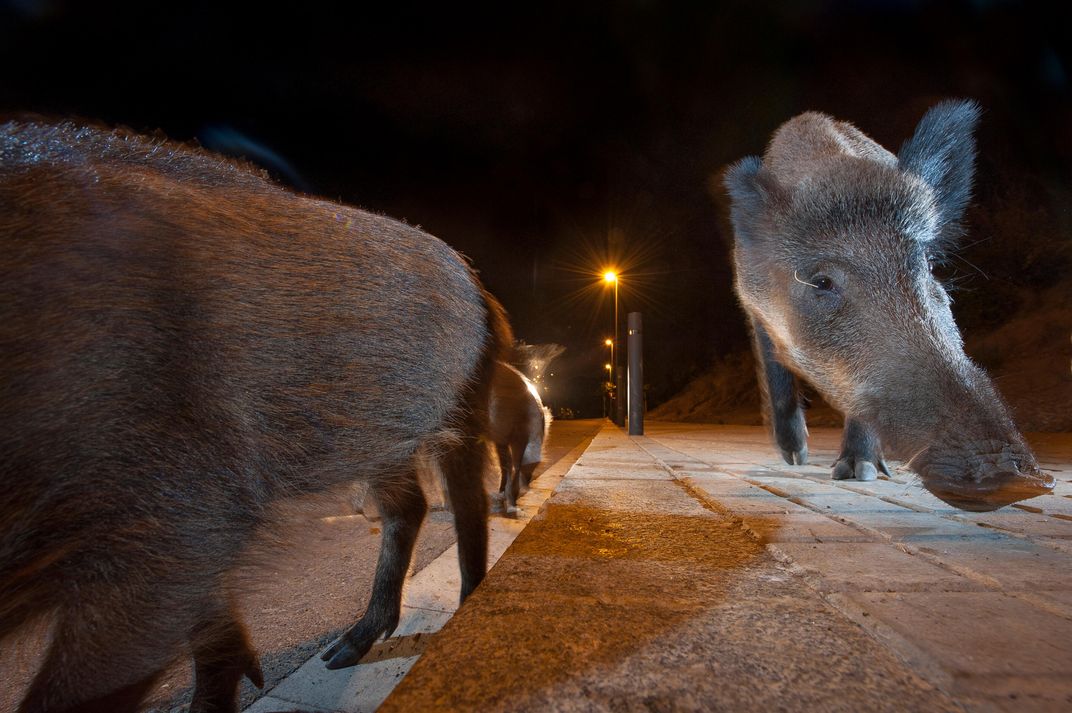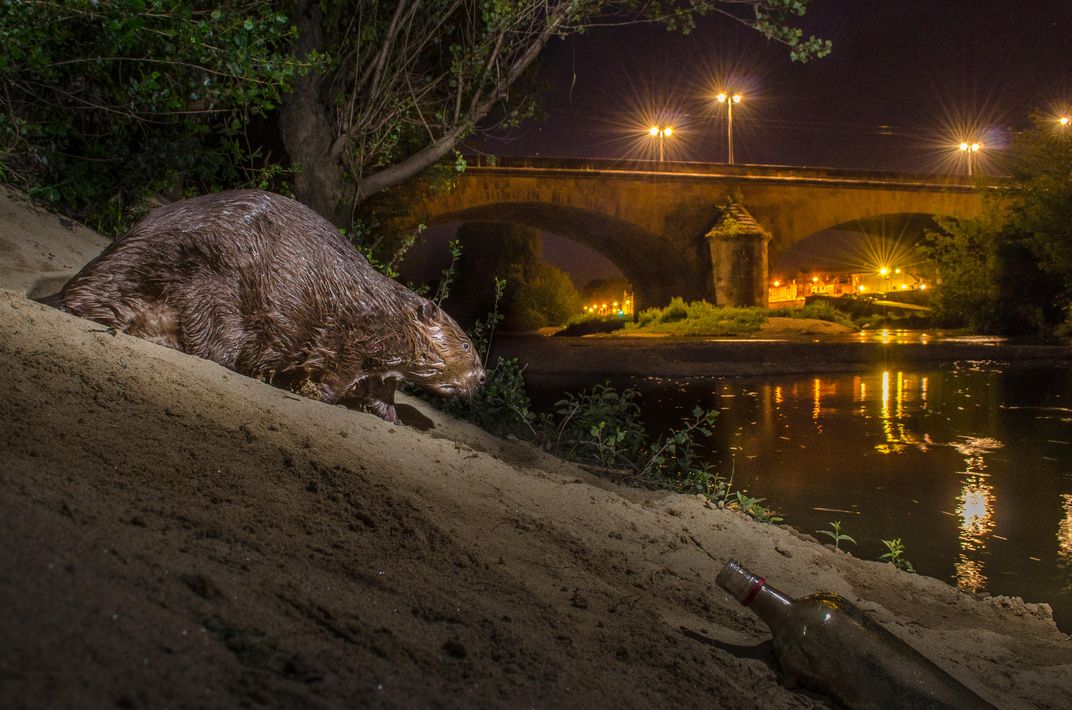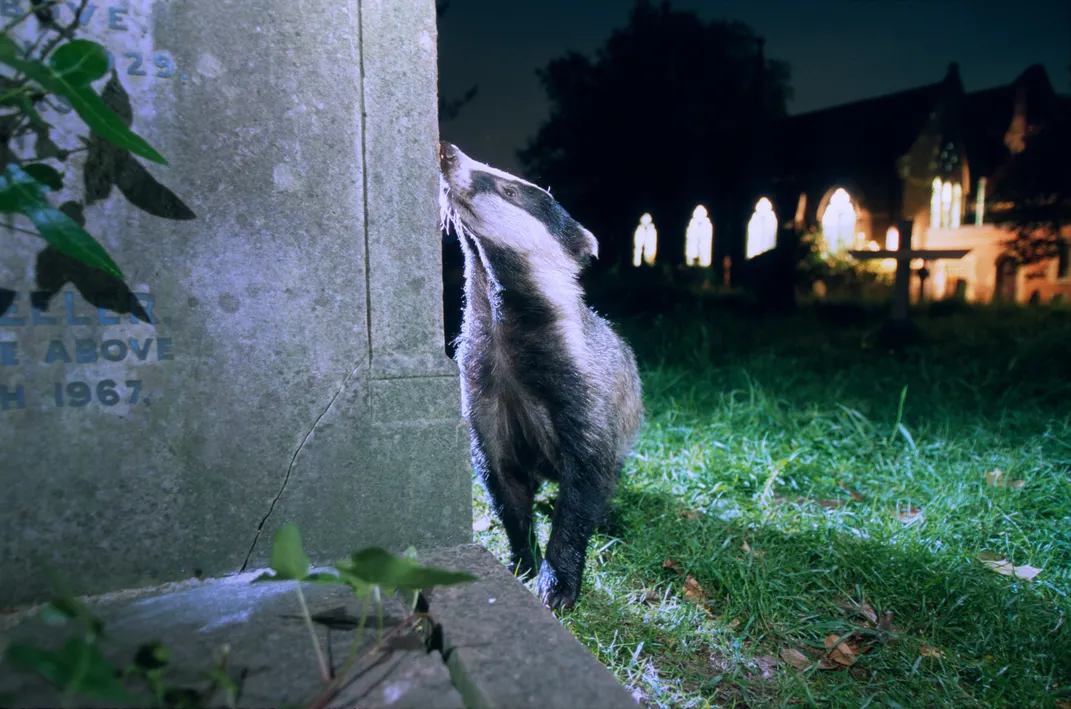Fear of Humans Is Forcing Daytime Animals Into Night Mode
The stress is pushing some animals to adjust their schedules—but not all will be quick enough to adapt
/https://tf-cmsv2-smithsonianmag-media.s3.amazonaws.com/filer/36/da/36da1b32-a791-440e-92ff-1700195703e2/mfgxgx_1.jpg)
Thanks to human activity, some daytime animals are switching over to the night shift.
Justin Brashares noticed it first in 2013, when he was studying olive baboons in Ghana: during times that humans were around, the primates stayed up long past their normal bedtimes. It seemed the creatures had learned that by staying up late, they could avoid being chased down, harassed or even killed. Not only that, but they could get revenge by orchestrating heists on their day-walking evolutionary cousins.
“They become nocturnal not just to avoid people, but to raid crops and prey on livestock,” says Brashares, a professor of ecology and conservation at the University of California at Berkeley.
Brashares studies the wide-ranging impacts humans have on wildlife and ecosystems. Some of his colleagues had noticed similar patterns: grizzly bears in Canada were becoming more active at night in response to hikers, while leopards and tigers in Nepal were doing the same in response to increased human foraging and firewood collection in their habitat during the day. Recently, camera traps in Africa have also revealed antelopes appearing more often at night near human settlements and hunters, he says.
To get a fuller picture of the ways humans changed the habits of nearby wildlife, he decided to conduct a larger review of the effects of human disturbance on the sleeping and activity patterns of animals.
In a recent study published in the journal Science, Brashares and his coauthors reviewed 76 studies covering 62 different mammal species. Kaitlyn Gaynor, a PhD student at Berkeley and the lead author of the research, says that the researchers rounded up data from published tables and charts recording animal activity for full 24-hour periods using methods like camera traps, live monitoring or radio collars, both in areas of high and low human disturbance.
They found that, on average, the species analyzed had been slowly switching over to a more nocturnal schedule in response to human disturbance. Specifically, they were 1.36 times more active during the night, compared to their counterparts who lived in areas with low to no human disturbance.
Some of the starkest contrasts included sun bears in the Sumatran jungle in Indonesia, which went from being 19 percent active during the night in areas with few signs of humans to 90 percent in high disturbance areas (perhaps we should now call them moon bears). There were leopards in Gabon, which went from 43 percent nocturnality without bushmeat hunting to 93 percent when it was prevalent. And then there were wild boars in Poland, which went from 48 percent nocturnality in natural forests to 90 percent in metropolitan areas.
“We found a strong response by all species," Gaynor says. "Even apex predators that typically don’t have to fear anything were showing a strong avoidance of people."
These changes can cascade through an ecosystem. Since animals which have evolved to hunt in the daytime may see diminishing returns when the lights are out, shifting their schedules can result in reduced fitness, reproduction levels and even survival rates. What that showed researchers was that “our presence can have an effect on wildlife—even if it is not immediately quantifiable,” says Gaynor.
Ana Benítez-López, a post-doctoral researcher at Radboud University in the Netherlands who published commentary on the recent study in the same issue of Science, says that the research adds what we knew about animals avoiding human disturbance completely.
Her own research has found that, on weekends in Spain, birds like little bustards and pin-tailed sandgrouse change their behavior in response to more people flocking to the countryside. While humans are hiking, hunting, mushroom-picking or dirt-biking, the birds get busier, forming larger, more defensive flocks and spending being vigilant. For the birds, this means less time on mating displays, building nests, feeding chicks or foraging for food.
“That, in the end, has consequences for survival or for reproduction rates,” Benítez-López says.
Gaynor’s study helps fill in another part of the picture of how humans disturb wildlife and ecosystems. The researchers only studied medium- and large-sized mammals, but she says she wouldn’t be surprised if the smaller prey species might see human disturbance as a safe haven since it keeps other predators away. “We call this a ‘human shield,’” she says.
Gaynor and her coauthors were surprised how commonly mammals switched over to nocturnal lifestyles, regardless of habitat type or intensity of human disturbance. According to their findings, there was almost no variation in intensity between the nocturnality effect caused by things like hunting, agriculture, intense urban development or hiking in the forest.
Justin Suraci, an ecologist at the University of California at Santa Cruz, has studied the effects of fear of humans on cougars and wasn’t involved in the latest research. He says this study reveals that there is a mismatch between what humans perceive to be a risk to wildlife, and what animals themselves perceive to be a risk. “We often consider recreation and especially non-motorized recreation like hunting and mountain biking as totally benign activities, but this shows that is not the case,” he says.
The finding has huge implications for conservation practices, says Suraci. He agrees with the authors of the paper when they say that we should be thinking not only of where humans are allowed access to protected wildlife areas—but also when. For example, if an endangered species tends to forage in a national park in the early morning hours and the evening—a common time for creatures like bears or deer—it might help to open the park only during midday.
On the plus side, Gaynor says the study does suggest that many animals are finding ways to adapt to human presence and ultimately, coexist. “You may also see natural selection happening, where animals are developing traits that allow them to be more successful around people,” she says.
But not all species are capable of switching their habits so easily, stress both Gaynor and Benítez-López. Reptiles, for instance, are particularly dependent on sunlight for energy. And a number of other species may not be able to cope with a night owl’s lifestyle. “We will probably have a few winners and lots of losers,” Benitez says. What's clear is that, as humans continue to expand their impact, we are bound to reshape ecosystems in unexpected ways.
/https://tf-cmsv2-smithsonianmag-media.s3.amazonaws.com/accounts/headshot/joshua-learn_copy.jpg)



/https://tf-cmsv2-smithsonianmag-media.s3.amazonaws.com/accounts/headshot/joshua-learn_copy.jpg)